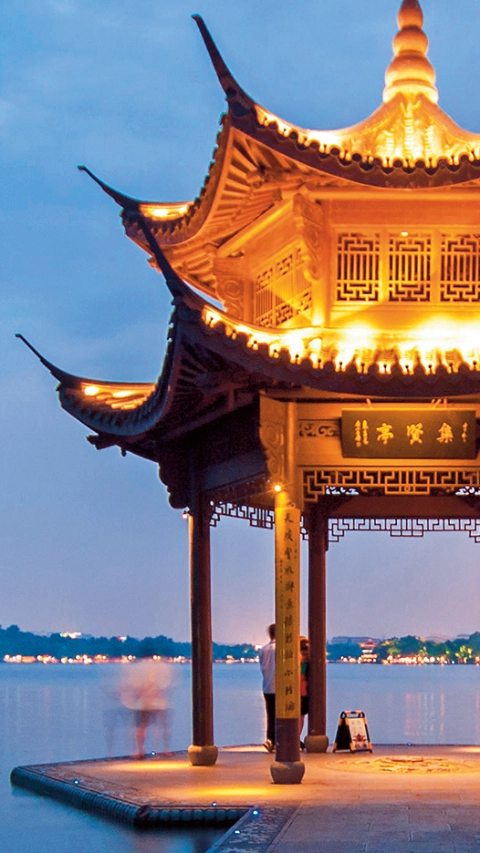4,000 liters
An Elastopave surface can absorb 4,000 liters of water per hour per square meter.

Focus – Resilience
How BASF helps cities to cope with flooding such as from heavy rain.
Torrential rain, bursting river banks, rising sea levels: Flooding is a threat for many cities around the world. With climate change, that threat is increasing. BASF helps protect cities from the elements.
Urban floods are a growing problem. When drains clog and stormwater has nowhere to run off, pavements, roads and public spaces become impassable. Rising water levels can damage infrastructure, put people at risk and even cause loss of life. Climate change means there are ever more extreme weather events around the world. With urban populations swelling, cities need to be made resilient to these risks.
One solution lies in the materials used for public spaces. “The problem arises because excess water cannot drain off,” says Christof Grieser-Schmitz, Segment Manager for Construction Infrastructure at BASF. “Many city surfaces are covered in non-porous asphalt or concrete, so water gathers in pools. It’s not just inconvenient, it’s also a hazard.”
To prevent this happening, BASF has developed Elastopave®, an innovative paving material that is durable, firm and waterpermeable.
In Europe, Elastopave has been used for sidewalks, cycle paths and parking lots, such as in Lemförde, Germany. Rainwater is channelled efficiently to the water-table below. No pooling means no frost damage, fewer potholes and no slippery surfaces. “Elastopave makes paths and roads safer, and improves a city’s water circulation system,” says Grieser-Schmitz.
4,000 liters
An Elastopave surface can absorb 4,000 liters of water per hour per square meter.
The idea of making city surfaces that absorb rainfall, like a sponge, is taking hold in China, where rapid urbanization and increased flooding have led the government to launch a “sponge city” construction program. Hangzhou, a city of 9 million, has to cope with heavy rainfall and typhoons, as well as tidal surges from the Qiantang River. As the population has grown, more of the surface area has been paved over, and the city’s drainage system can no longer cope. As part of the solution, Elastopave has been installed along the city’s West Lake.
Crushed gravel or stones and polyurethane create interconnected voids that allow water to percolate through, replenishing aquifers and improving water circulation.
Like Hangzhou, many cities are built on rivers or near the sea. Tokyo, Shanghai and Mumbai – some of the world’s biggest cities are located by the coast for the good reason that waterways provide natural transport routes for trade. But rising sea levels, storms and tidal surges are increasingly threatening these areas.
Elastocoast® helps meet this challenge. Like Elastopave, it is a water-permeable polyurethane system. Installed along river banks and coastlines, its open structure absorbs and disperses water, reducing the velocity of the current and providing a suitable habitat for vegetation. Elastocoast is being used in Europe and Asia to ensure that rivers running through urban areas stay within their banks and oceans do not damage or flood coastlines and cities.
“By reducing risks associated with flooding, BASF helps make cities more resilient,” says Seung Hun Lim, Manager Construction Infrastructure, Asia, at BASF.


